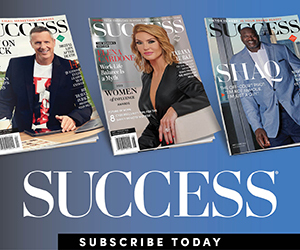The rumors are true: In-person events are back, and in a big way, according to American Express’s 2023 Global Meetings and Events Forecast. Not only are 90% of meetings in North American companies expected to have an in-person component this year, but 63% of North American respondents expect attendee numbers to return to 2019 levels in the next year or two. Sixty-five percent of the companies surveyed anticipate increases in meeting spending in 2023, with 10% saying the increase will be more than 11%.
However, two-plus years of being virtual means we’re now looking at the next generation of events. It’s more than simply getting people together and allowing them to network, all while creating a memorable or enjoyable experience—the approach is different, as are the event planning tips companies used to rely on. The same is true for the structure, format and even length—among a host of other elements—which presents a unique opportunity for leaders to establish a legacy for their brand.
What type of experience do you want your company (and yourself) to be remembered for? How do you want people to connect with the experience? How do you want to help people foster the connections made through the event? Approaching event planning with this mindset can influence the experience you build.
As a leader, you may want to delegate much of the event-planning responsibilities. But if it’s your vision, you should be directly involved in the construction from start to finish. This isn’t to say you must do everything yourself, but the team does need guidance as to what you’re looking for.
The time is now for leaders to get “plugged” into the planning and help create a more effective process overall to execute both large- and small-scale events. The following are just a few event planning tips to get you started.
4 Event Planning Tips to Help Business Make an Impact
1. Empower teams to make the right decisions.
Many meetings are unproductive or a waste of time, and meetings involving event coordination may become nothing more than project updates. Though these aren’t without merit to gauge progress, it shouldn’t be the sole focus. For execution teams to act on the right decisions around every detail, the meeting agenda should also touch on the vision, benchmarks, next steps and any obstacles that might require additional support, among other topics. And it should do so at a cadence that makes sense for you, the team and the event itself.
Perhaps all that’s necessary is to meet once a month until the event date closes in. Maybe every two weeks is a better option. Information is power, as they say, and you can empower your team to take initiative on their own. Research has shown that empowering team members may lead to innovative behavior and improved work performance, among other benefits. This potential boost to innovative, proactive and knowledge-sharing behaviors may be especially useful when it comes to the team developing innovative ideas and the wherewithal to put those ideas into action. Engage all team members early in the planning process. Provide them with the freedom necessary to make decisions on their own so that when things deviate from the plan, they can adjust accordingly instead of being left unsure of the next steps.
2. Find a balance between internal vision and external engagement.
You’re essentially building a legacy for how you want to be remembered. This can have a sizable impact on not only creating a memorable and lasting experience for your audience, but encouraging them to return year after year.
Just look at the Consumer Technology Association’s CES® event, which claims to be “the most influential tech event in the world.” At this year’s event, CES welcomed nearly 120,000 attendees from around the world and offered massive visibility (print and social media) to its exhibitors and presenters. The planning and execution of this event, which showcases other companies’ solutions, requires months of vetting potential exhibits, working with venue and event teams and organizing high-profile keynotes.
While staying true to your vision is critical, make sure that you don’t lose sight of the customer in the process. Get boots on the ground and make a habit out of listening, relaying what’s learned and even following up with customers. Then, it’s just a matter of striking a balance between your vision for the event and what the audience is saying. It’s important not to go too broad or too narrow when homing in on your audience and vision; it’s more about finding something in between that speaks to what’s really going on in the business and what attendees want in an event.
3. Create a purposeful, intentional atmosphere for meetings.
All discussions should be connected to the company strategy—“connected” being the operative word here. Think about the purpose and desired outcome. What conversations do you need to initiate? What is the red thread or throughline for everything you’re doing at the event?
Without that connection, the focus can shift away from the strategy. Our company uses a pyramid diagram to divide ideas into sections and organize the meeting structure to ensure all discussions are intentional and purposeful.
At a recent sales kickoff for a large client, we ensured the client’s new methodology and customers were at the core of every design element. Everything from the digital solution to the scenarios that participants engaged in to how facilitators led debrief conversations was designed to reinforce the new methodology and drive the effectiveness of a cross-functional team in service of customers. As a result of that intentionality, the client saw a 54% uplift in their pipeline coming out of the event and a 40% adoption growth of a newly introduced scorecard for account executives.
4. Reflect on operational successes and failures.
You may not think of reflection as a competency, but research shows that such a habit can be the differentiator between extraordinary and mediocre workplace performance and engagement, and it may serve to benefit your team as well. As such, make after-event discussions more than just debriefing sessions. Did the experience lead to the desired outcomes? Were there any unanticipated outcomes? More importantly, how do you plan to track results over the next few weeks or months?
Our company worked with one client who was exceptional at this process. Naturally, the event’s theme fed into the experience from start to finish, and the outcomes were as expected. But instead of checking off that box and returning to business as usual, the client took reflected on the outcomes. They found ways to incorporate that specific experience into their organization so they didn’t lose any traction made with the target audience.
Thinking more strategically about how to execute an event and incorporating these event planning tips will put you a step ahead of the competition. It will also help you create an experience that’s both memorable and a critical part of establishing a legacy for you and your company.



